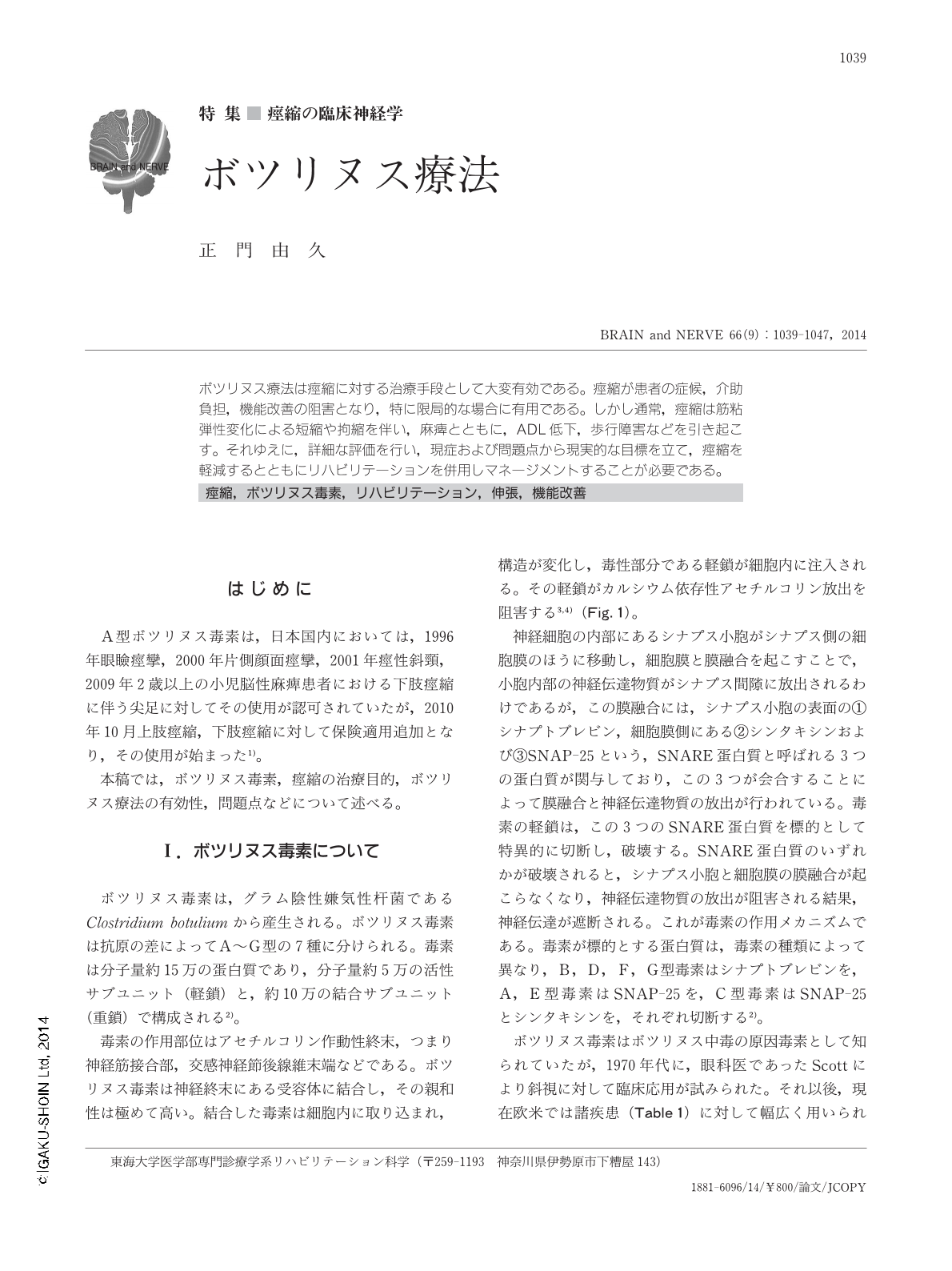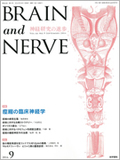Japanese
English
- 有料閲覧
- Abstract 文献概要
- 1ページ目 Look Inside
- 参考文献 Reference
ボツリヌス療法は痙縮に対する治療手段として大変有効である。痙縮が患者の症候,介助負担,機能改善の阻害となり,特に限局的な場合に有用である。しかし通常,痙縮は筋粘弾性変化による短縮や拘縮を伴い,麻痺とともに,ADL低下,歩行障害などを引き起こす。それゆえに,詳細な評価を行い,現症および問題点から現実的な目標を立て,痙縮を軽減するとともにリハビリテーションを併用しマネージメントすることが必要である。
Abstract
Botulinum toxin (BTX) administered as an adjunct to other interventions for spasticity can act as a useful and effective therapeutic tool for treating patients disabled by spasticity. Presence of other non-reflex motor disorders (muscle stiffness, shortness, and contracture) can complicate the clinical course and disturb rehabilitative process of patients with spasticity. Treatment of spasticity using BTX can improve paralysis by correcting muscular imbalance that follows these diseases. In patients with chronic severe spasticity, we also have to address unique and difficult-to-treat clinical conditions such as abnormal posture and movement disorders. The effectiveness of BTX in treating some of these conditions is discussed. Because patients with neurological disabilities can show complex dysfunctions, specific functional limitations, goals, and expected outcomes of treatment should be evaluated and discussed with the patient, family members, and caregivers, prior to initiating BTX therapy. BTX therapy might improve not only care, passive function, but also motor functions in these patients by supplementing intensive rehabilitation with repetitive transcranial magnetic stimulation, transcranial direct-current stimulation, peripheral electrical stimulation, muscle stretching, and other rehabilitation strategies.

Copyright © 2014, Igaku-Shoin Ltd. All rights reserved.


